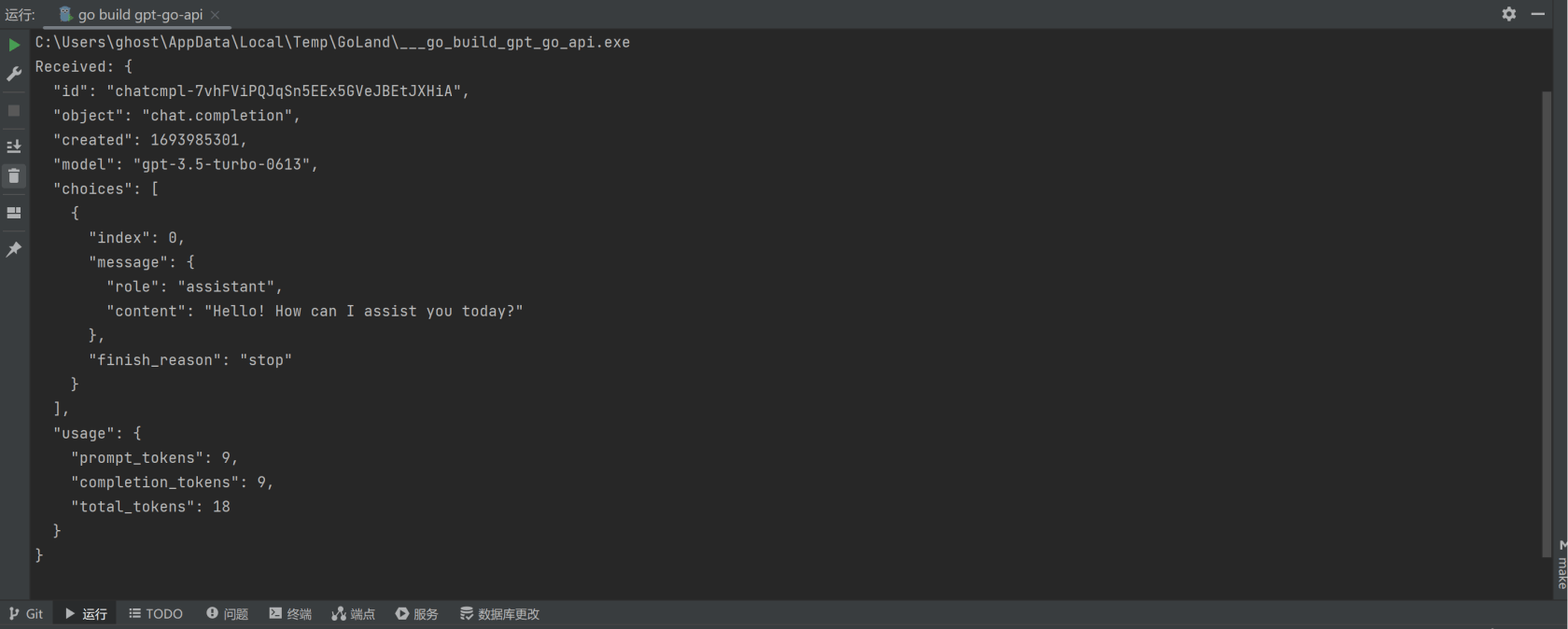go-gpt核心代码
package main
import (
"bytes"
"context"
"encoding/json"
"fmt"
"golang.org/x/net/proxy"
"io"
"net"
"net/http"
)
// ChatCompletionRequest 描述了向 OpenAI API 发送的请求格式。
type ChatCompletionRequest struct {
Model string `json:"model"`
Messages[] ChatCompletionMessage `json:"messages"`
}
// ChatCompletionMessage 描述了消息的格式,其中包含角色(如用户、AI)和内容。
type ChatCompletionMessage struct {
Role string `json:"role"`
Content string `json:"content"`
}
func main() {
socks5Addr := "127.0.0.1:10808" //本地代理
// 创建SOCKS5拨号器
dialer, err := proxy.SOCKS5("tcp", socks5Addr, nil, proxy.Direct)
if err != nil {
fmt.Println("Error creating dialer:", err)
return
}
// 封装拨号器以支持DialContext
dialerFunc := func(ctx context.Context, network, addr string) (conn net.Conn, err error) {
return dialer.Dial(network, addr)
}
httpTransport := &http.Transport{
DialContext: dialerFunc,
}
httpClient := &http.Client{
Transport: httpTransport,
}
url := "https://api.openai.com/v1/chat/completions" // OpenAI completion endpoint
apiKey := "your token" //chatgpt's api-key
requestBody := ChatCompletionRequest{
Model: "gpt-3.5-turbo",
Messages: []ChatCompletionMessage{
{
Role: "user",
Content: "Hello!",
},
},
}
jsonBody, err := json.Marshal(requestBody)
if err != nil {
fmt.Println("Error marshalling JSON:", err)
return
}
req, err := http.NewRequest("POST", url, bytes.NewBuffer(jsonBody))
if err != nil {
fmt.Println("Error creating request:", err)
return
}
req.Header.Set("Content-Type", "application/json")
req.Header.Set("Authorization", "Bearer "+apiKey)
resp, err := httpClient.Do(req)
if err != nil {
fmt.Println("Error sending request:", err)
return
}
defer resp.Body.Close()
body, err := io.ReadAll(resp.Body)
if err != nil {
fmt.Println("Error reading response:", err)
return
}
fmt.Println("Received:", string(body))
}运行结果:
实现功能:
使用了一个本地的 SOCKS5 代理来发送一个消息 "Hello!" 到 OpenAI 的 API,并打印 API 的响应。
本作品采用《CC 协议》,转载必须注明作者和本文链接



 关于 LearnKu
关于 LearnKu




推荐文章: